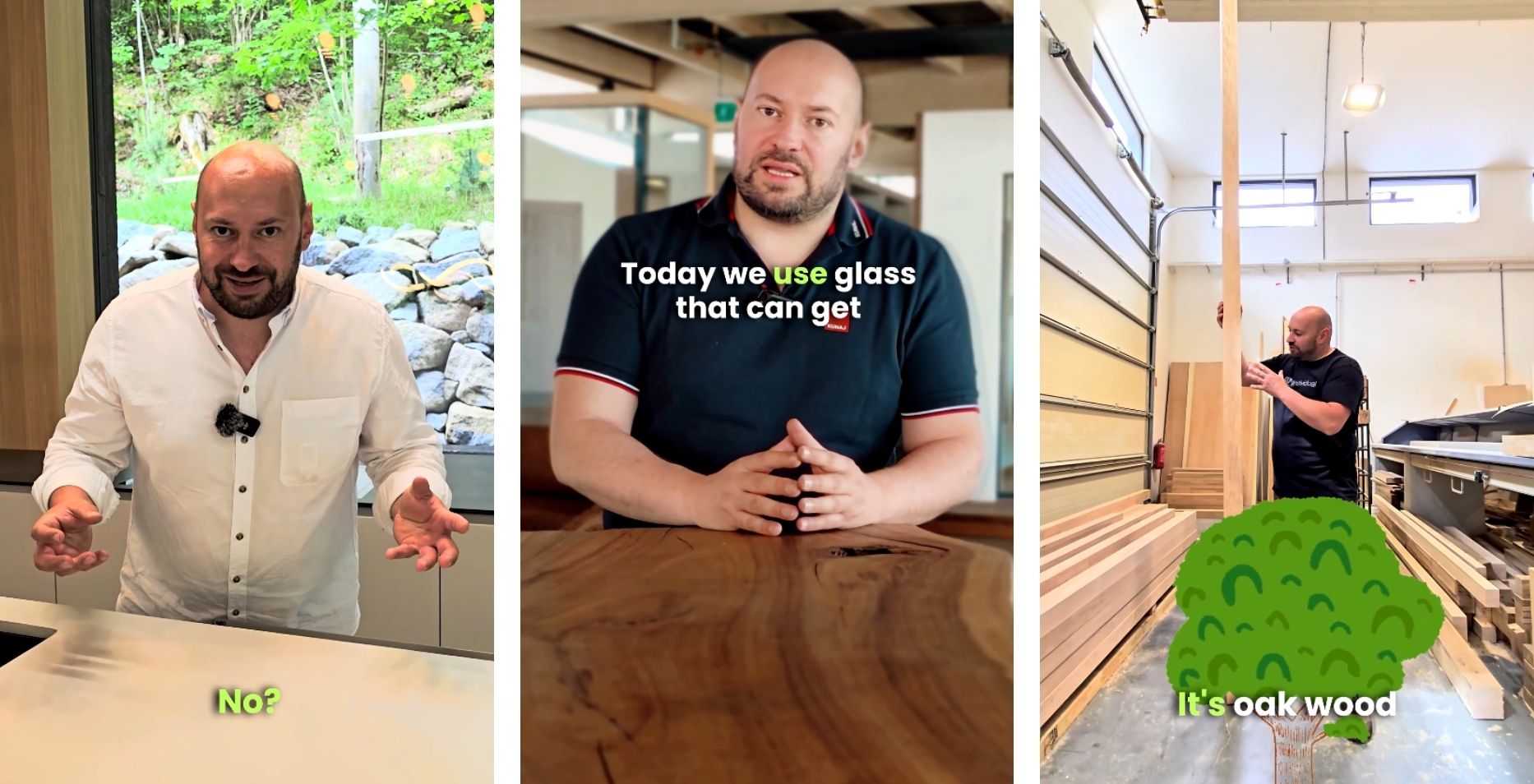Má najtvrdšie „ihličnaté drevo.“ Rastie v zmiešaných lesoch, v Alpách a aj v Karpatoch. Rastie aj v našich Tatrách, v nadmorskej výške okolo 1300m nad morom. Dorastá do výšky 50 metrov a priemer kmeňa je okolo jedného metra. Ako jediný z našich ihličnanov na jeseň opadáva.

Drevina červeného smreka je známa svojou vzácnosťou a nižším rozšírením. V Čechách dostal prezývku „modřín“, pretože rýchlo zmodrie a chytí sivastú patinu. Milovníci dreva však túto vlastnosť ocenia, nepokladajú ju za nevýhodu, práve naopak. Červený smrek sa s obľubou požíva na terasy a exteriérové obklady, a to práve pre vysoký obsah živíc v jeho dreve. Je odolný voči poveternostným vplyvom a hnilobe, čo z neho robí obľúbený materiál používaný v exteriérových priestoroch. Jeho červenohnedý odtieň je spôsobený živicovými kanálikmi nachádzajúcimi sa v jadre dreviny. Samotné drevo je však skôr svetlé.

Textúra dreva je väčšinou pruhovaná, a drevo je zaujímavo matne lesklé. Letokruhy sú ľahko viditeľné kvôli výrazným rozdielom medzi letným a jarným drevom. Hrčovitosť je v tomto prípade pomerne nízka. Životnosť impregnovaného dreva červeného smreku je neporovnateľne vyššia, ako životnosť dreva bez impregnácie. Pokiaľ je drevo umiestnené pod strechou, jeho životnosť sa odhaduje na cca 75 rokov. Pokiaľ ho však nechránite a neimpregnujete, životnosť môžeme odhadovať len na 7 až 10 rokov. Drevo je mäkké a pružné, pevné a dobre znáša záťaž. Ľahko sa suší, málo sa krúti a zosychá. Medzi hlavné výhody smrekovcového dreva teda patrí jeho vysoká tvrdosť, dlhá životnosť, odolnosť voči pôsobeniu vody a vlhkosti a hlavne odolnosť pri striedaní vlhka a sucha. Obstarávacia cena je vyššia ako pri použití klasického smreka.

Vedeli ste, že smrek je aj liek? Od konca marca asi do polovice mája je vhodné obdobie na zber mladých, mäkkých, svetlozelených výhonkov z koncov konárikov ihličnatých drevín, najmä smreku, ktoré obsahujú veľké množstvo vitamínu C. Nazberané výhonky doma prepláchnite pod tečúcou vodou a nechajte odkvapkať. Po hrstiach ich potom sypte do väčšej sklenej fľaše (4 až 5-litrovej) v asi 5 cm vrstve a zasypte cukrom. Odporúča sa naň naukladať plátky citróna (najlepšie v bio kvalite), ktorý slúži ako konzervant. Vrstvy opakujte dovtedy, kým fľaša nie je plná. Jemne pritlačte, fľašu zaviažte celofánom a postavte na okno, kde najviac svieti slnko. Nechajte stáť 2 až 3 týždne, kým sa cukor neroztopí a nevytvorí sa hustá šťava. Tú potom preceďte cez plátno alebo záclonu a nalejte do menších fliaš. Potom už len uložte na chladné miesto. Sirup užívajte v zime ako prevenciu i liečbu kašľu a nachladnutia, 1 až 2 lyžice denne ráno samostatne alebo pridajte do čaju či iného nápoja. Rozpúšťa hlieny, čím uvoľňuje dýchacie cesty a uľahčuje vykašliavanie. Sirup má veľmi príjemnú chuť a chutí aj deťom.

































)%20(1).png)


































































